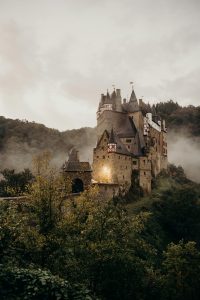Atmospheric special effects in film making are techniques used to create or enhance the environment or atmosphere of a scene. They are techniques designed to simulate natural phenomena or environmental conditions. These elements can include elements such as fog, mist, rain, snow, smoke, haze, and various lighting techniques. Here’s how they’re typically used:
- Creating Mood: Atmospheric special effects are crucial in setting the mood or tone of a scene. For example, fog or mist can create a sense of mystery or suspense, while heavy rain can convey sadness or intensity.
- Enhancing Realism: Filmmakers use atmospheric special effects to make scenes appear more realistic. Adding fog to a jungle or smoke to an electrical short can make scenes look more natural, as real-life environments often have these elements.
- Symbolism and Metaphor: Sometimes, atmospheric special effects are used symbolically to represent certain emotions or themes within the story. For example, a stormy sky might symbolize conflict or turmoil in the narrative.
- Transition and Continuity: Atmospheric special effects can aid in smooth transitions between scenes or shots, helping maintain continuity throughout the film.
- Creating Visual Interest: Beyond their narrative functions, atmospheric special effects also contribute to the visual appeal of a film. They add depth and texture to the image, making it more visually engaging for the audience.
- Highlighting Visuals: lighting can be used to highlight certain aspects of a scene or draw attention to specific characters or objects. For example, using colored lighting with fog can create a visually striking and memorable scene.
- Concealing or Revealing: Atmospheric special effects can also be used strategically to hide or reveal elements within a scene. Fog, for instance, might obscure a character’s entrance, creating suspense, or it might reveal them gradually, building tension.
Fog In Film
 Fog effects are commonly used in movie productions across different genres. Fog effects are employed in various film productions to enhance atmosphere, create mood, and add visual depth to scenes. Movie productions are increasingly using water-based fog for atmospheric special effects instead of steam or chemical-based fog and haze machines for several reasons:
Fog effects are commonly used in movie productions across different genres. Fog effects are employed in various film productions to enhance atmosphere, create mood, and add visual depth to scenes. Movie productions are increasingly using water-based fog for atmospheric special effects instead of steam or chemical-based fog and haze machines for several reasons:
- Health and Safety: Water-based high-pressure fog effects is safer to inhale. Chemical-based fog machines may emit potentially harmful substances such as glycol ethers or mineral oils, which can irritate the respiratory system or cause allergic reactions.
- Environmental Impact: Water-based high pressure fog effects are generally more environmentally friendly compared to chemical-based ones. They produce less pollution and don’t contribute to ozone depletion or release harmful chemicals into the atmosphere.
- Regulations and Restrictions: Many regions have specific environmental impact regulations. Water-based high-pressure fog effects often meet stricter safety standards and are permitted in more locations than chemical-based ones.
- Performance: Water-based fog high-pressure fog effects can produce a fine mist that disperses evenly and creates a more natural-looking fog effect. This can be especially important for achieving specific visual effects in film productions.
Overall, the shift towards water-based high-pressure fog effects in movie productions reflects a broader trend towards safer, more environmentally friendly, and higher-performing atmospheric special effects in the entertainment industry. Koolfog works with movie production companies, F/X designers, film artist and thematic storytellers to create atmospheric effects including water-based fog or mist. Our successful suite of atmospheric special effects demonstrates authentic conditions for on-screen experiences.


